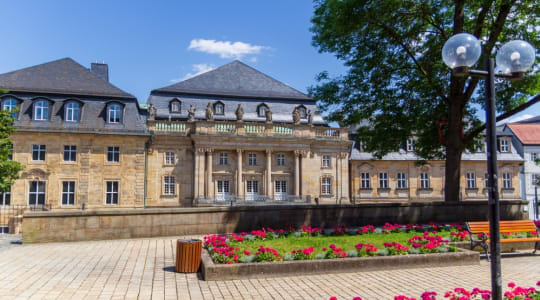
The Margravial Opera House is an opera house located in the town of Bayreuth in Germany. It was built in the mid-18th century and is considered one of the most beautiful and well-preserved examples of Baroque theater architecture in Europe.
The opera house was commissioned by Margravine Wilhelmine of Bayreuth, a patron of the arts and sister of Frederick the Great of Prussia. It was designed by the Italian architect Giuseppe Galli Bibiena and built between 1744 and 1748. The interior of the opera house features richly decorated stucco work, gilded moldings, and a magnificent ceiling fresco.
The Margravial Opera House was used for performances of opera, ballet, and theater until the early 19th century, after which it fell into disrepair. In the late 20th century, a major restoration effort was undertaken to restore the opera house to its former glory. The restoration was completed in 2008, and the opera house was reopened to the public.
Today, the Margravial Opera House is a UNESCO World Heritage Site and a popular tourist destination. It hosts a variety of opera and theater performances throughout the year, and visitors can take guided tours of the opera house to learn about its history and architecture.
The Margravial Opera House is considered a masterpiece of Baroque theater architecture and is a must-visit destination for anyone interested in the arts or history. Its richly decorated interior and well-preserved architecture provide a glimpse into the opulent world of 18th century European court life.
Explore Near Margravial Opera House
Discover 5 attractions, 5 cities, and 1 airport within 75km. Perfect for planning day trips, finding connecting flights, or discovering new destinations to explore during your visit.
Nearby Attractions & Places to Visit
5 destinations within 3.4km - 66.3km from your location





Nearby Cities Worth Exploring
5 destinations within 376m - 67.2km from your location
Airports Near Margravial Opera House
1 destination within 61.2km from your location
Cross-Border Adventures Near Margravial Opera House
Discover cross-border adventures near Margravial Opera House. Explore neighboring countries with similar attractions and extend your travel experience across borders.








And 1 more neighboring countries